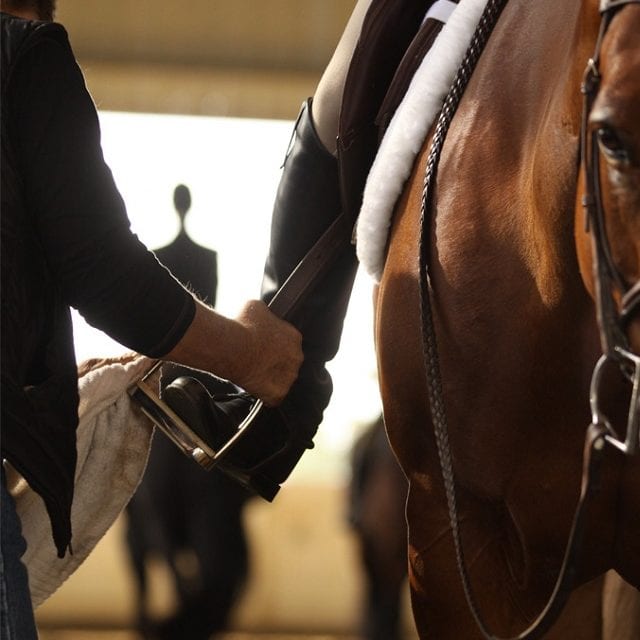Stirrups aren’t just a resting place for your feet when you’re horseback riding. That’s why appropriate stirrup length is important for safety, balance and correct riding skills.
There are many methods to judge the proper stirrup length, and there are many variables that affect the proper length, such as the rider’s build, the size and gait of the horse, the saddle and the activity in which the rider is participating. For example, dressage and saddle seat require the longest length because the rider is sitting back and is using lots of leg on the horse, while jumping is the shortest.
A lot of people use the “fist” method for determining the correct stirrup length. This measurement is taken by having the rider mount, then stand in his stirrups to see if he can fit his fist or the width of his hand between his seat and the seat of the saddle. Personally, I am not a fan of this technique.
For one thing, it is not a great idea to put your fist in a place that it doesn’t belong. Secondly, unless the rider can properly stand in the stirrups, this measurement is useless. If the rider rises in the stirrup by pushing up off the stirrup, straightening the knee and lifting the heel (as most beginner through intermediate riders tend to do), there will always be plenty of room between the crotch and saddle. Only when the rider uses the correct rising technique and rolls onto his thighs while the legs and heels lengthen will this measurement be accurate.
If the saddle is not the right size for the rider and the stirrups will not adjust to the correct length, don’t compromise the safety of the rider by letting him ride because the rider relies more on those stirrups for balance.
To start with, the rider must be able to sit comfortably in the balance position of ear-shoulder-hip-heel alignment. If the stirrup is too long, no matter what discipline, the rider will have to reach with his toes for the stirrup, and this will cause the rider to ride in the heels-up position. No matter what the discipline, when the heels are up, the rider is not balanced, anchored on the horse or able to use his legs to communicate effectively with the horse. Furthermore, if the stirrup is too long and the lower leg hangs straight down, the rider’s calf is not on the horse; and the leg becomes ineffective as an aid to communication.
Click here to read the rest of the article by Julie Goodnight for The American Quarter Horse Journal







